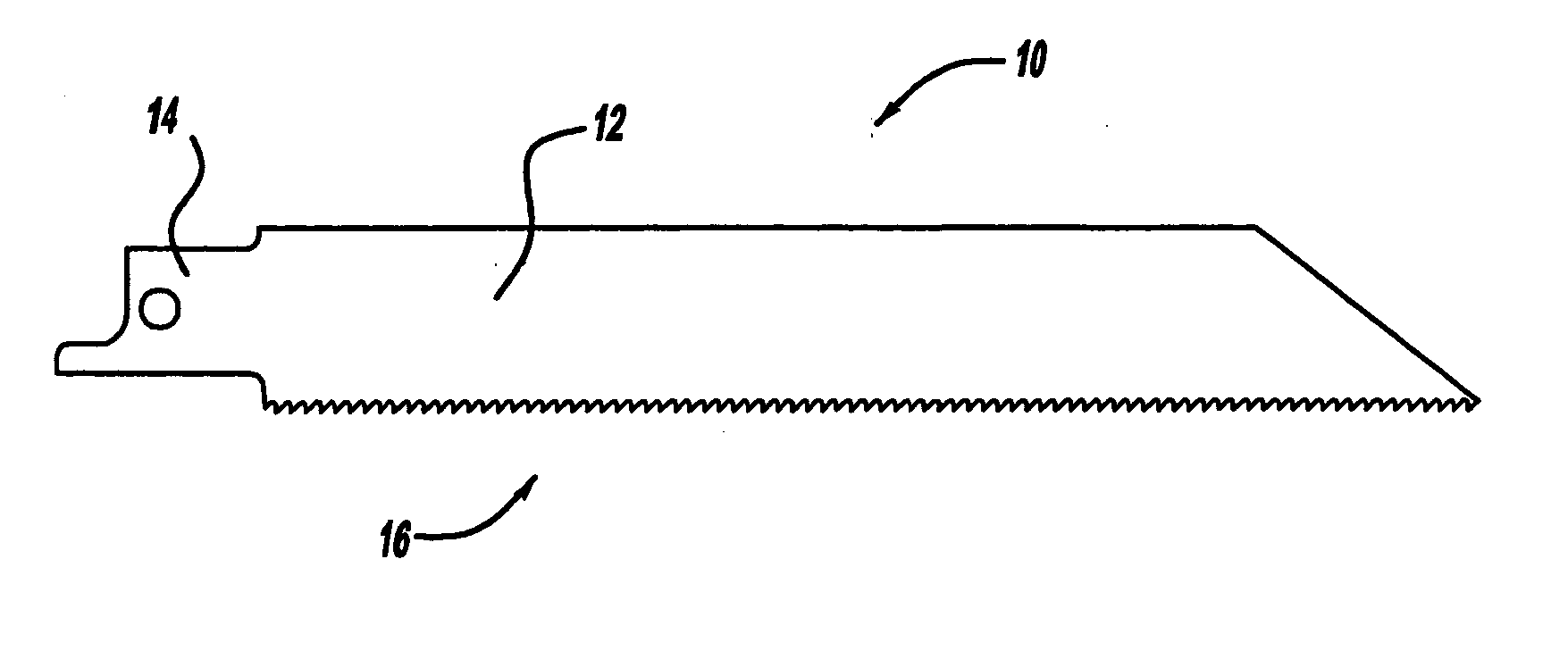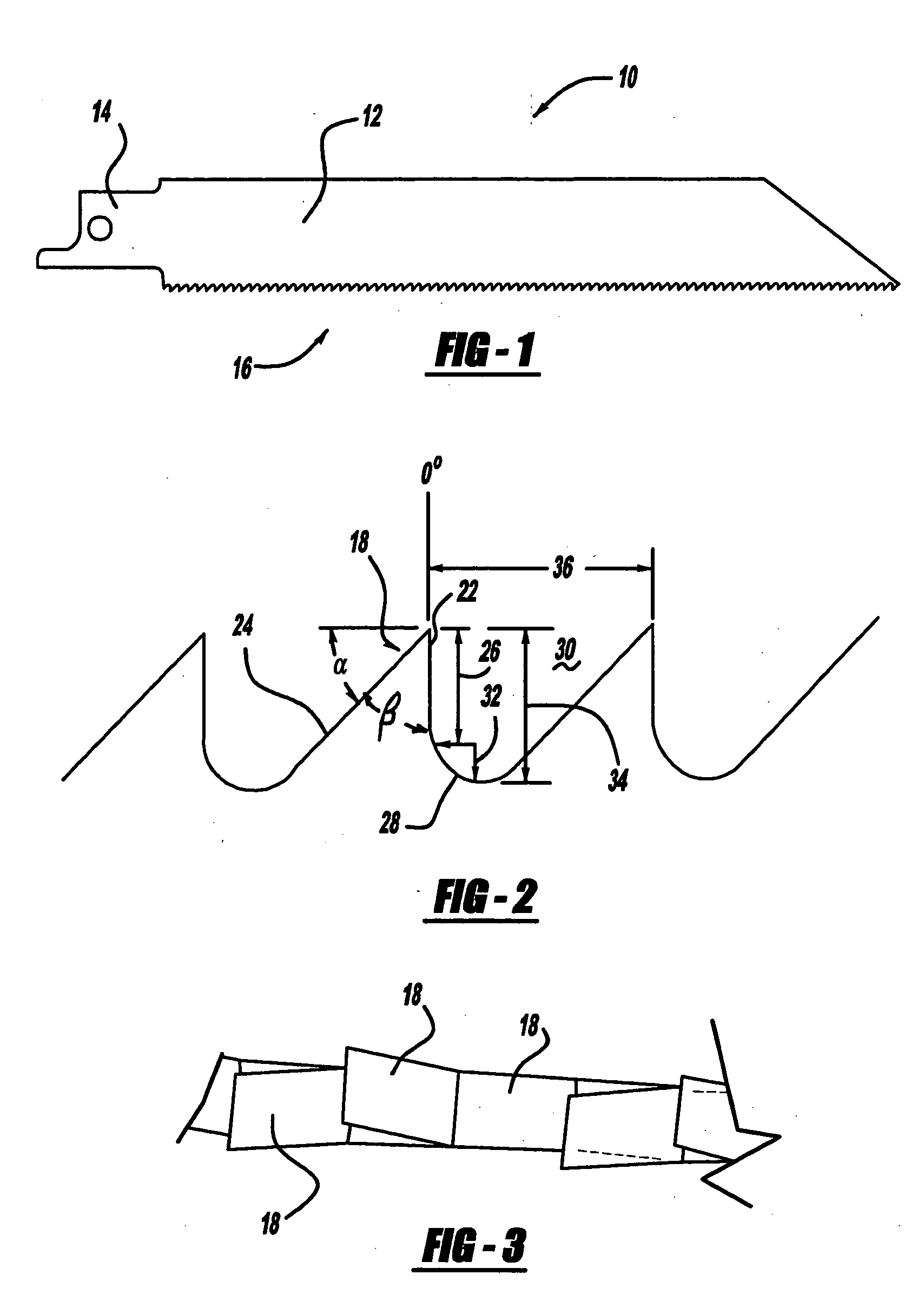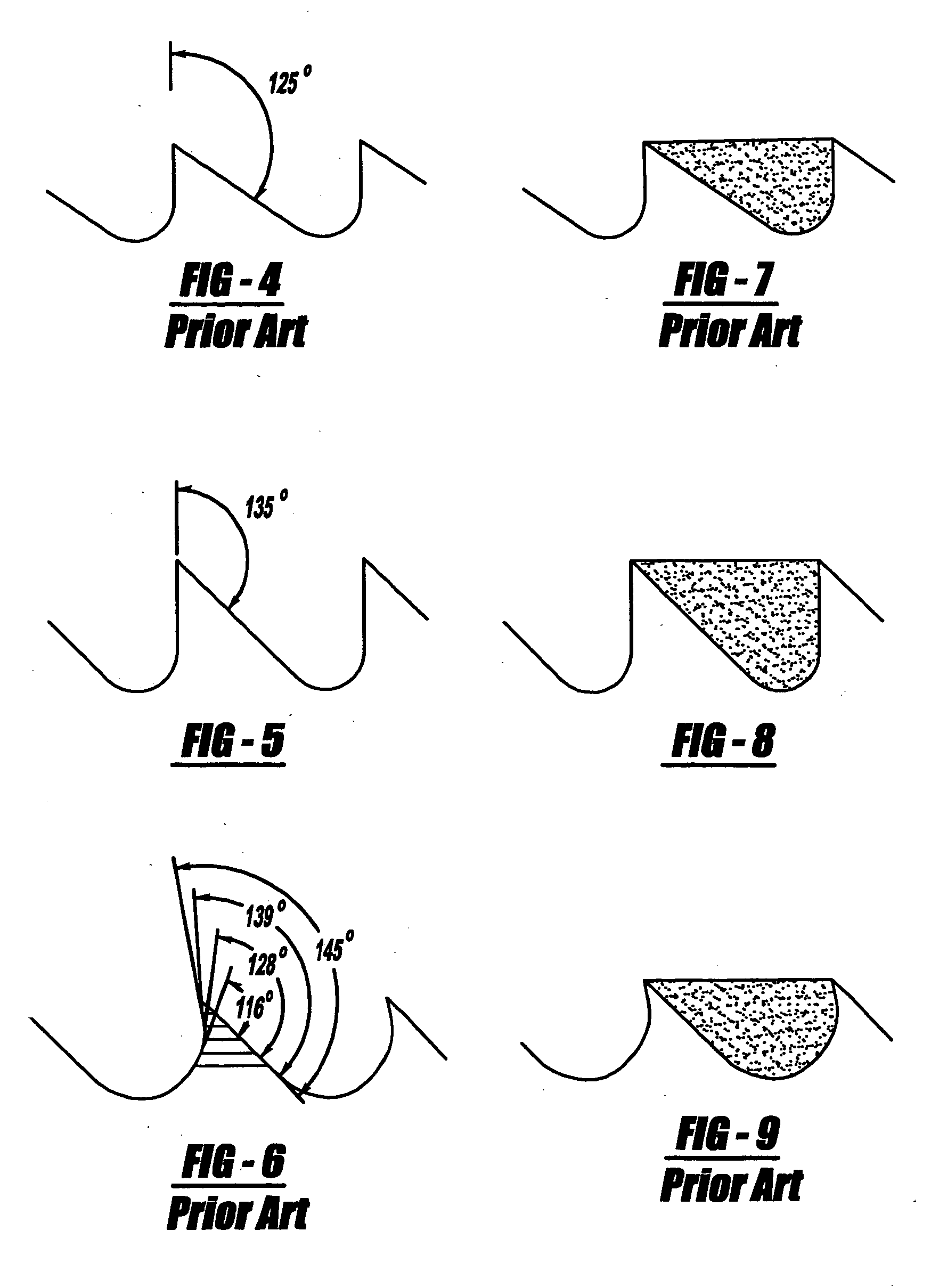Tooth form design for reciprocating saw blade
a reciprocating saw blade and blade technology, applied in the field of saw blades, can solve the problem of fast cutting of the saw blade through the material
- Summary
- Abstract
- Description
- Claims
- Application Information
AI Technical Summary
Benefits of technology
Problems solved by technology
Method used
Image
Examples
Embodiment Construction
[0017] Turning to the figures, a reciprocating saw blade is illustrated and designated with the reference numeral 10. The saw blade 10 includes a body 12, a connecting portion 14, and a cutting portion 16. The cutting portion 16 includes a plurality of teeth 18. The teeth 18 can have a raker style set wherein a first tooth is neutral or in the plane of the body with a second tooth offset to the left and a third tooth offset to the right with a repeating pattern as seen in FIG. 3.
[0018] Turning to FIG. 2, an enlarged tooth form is illustrated. The tooth 18 has a rake face 22 and a relief face 24. The rake face 22 is perpendicular to the horizon and thus is a zero angle rake face. The rake face 22 or land has a tooth depth identified by the numeral 26. The relief face 24 is defined by a relief angle α of between forty to fifty degrees. Preferably, the relief angle is between forty-four to forty-six degrees. The relief face 24 is continuous with a curved portion 28 of the gullet 30.
[...
PUM
| Property | Measurement | Unit |
|---|---|---|
| relief angle | aaaaa | aaaaa |
| included angle | aaaaa | aaaaa |
| angle | aaaaa | aaaaa |
Abstract
Description
Claims
Application Information
 Login to View More
Login to View More - R&D
- Intellectual Property
- Life Sciences
- Materials
- Tech Scout
- Unparalleled Data Quality
- Higher Quality Content
- 60% Fewer Hallucinations
Browse by: Latest US Patents, China's latest patents, Technical Efficacy Thesaurus, Application Domain, Technology Topic, Popular Technical Reports.
© 2025 PatSnap. All rights reserved.Legal|Privacy policy|Modern Slavery Act Transparency Statement|Sitemap|About US| Contact US: help@patsnap.com



